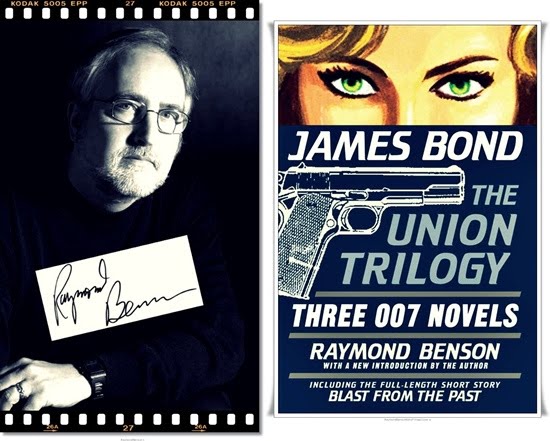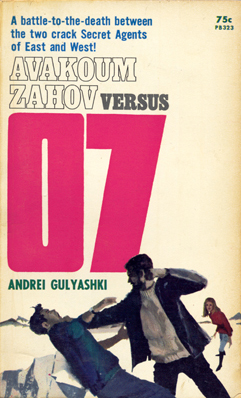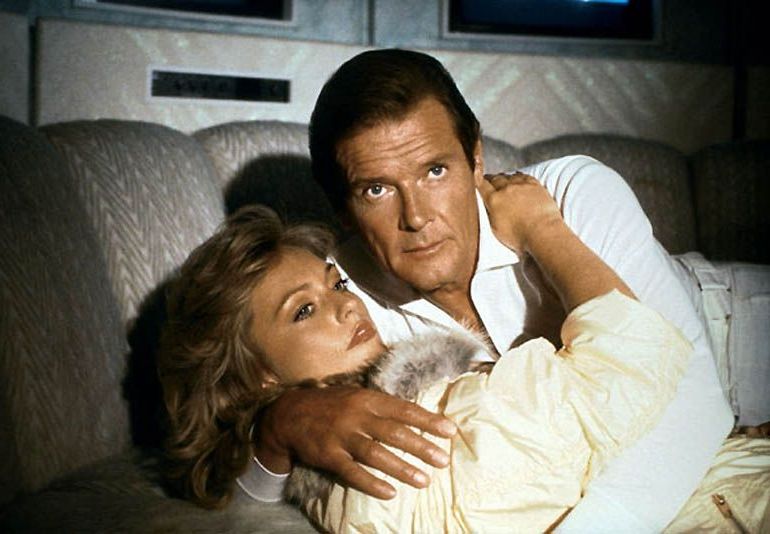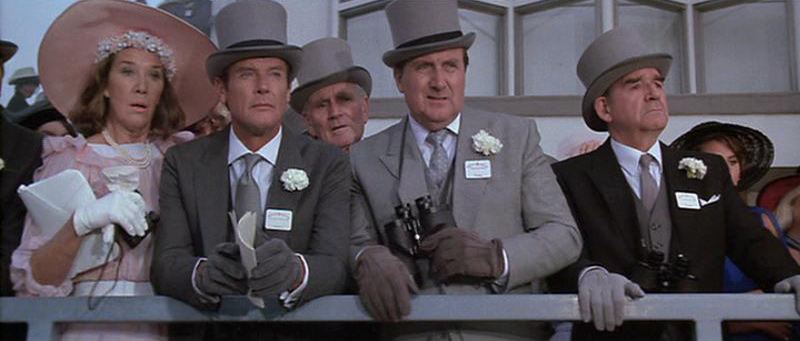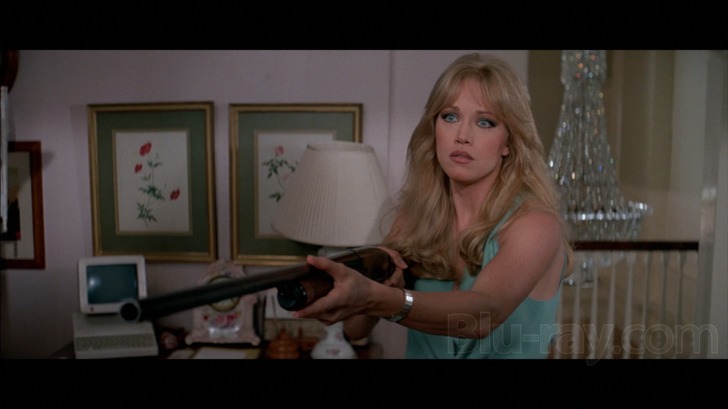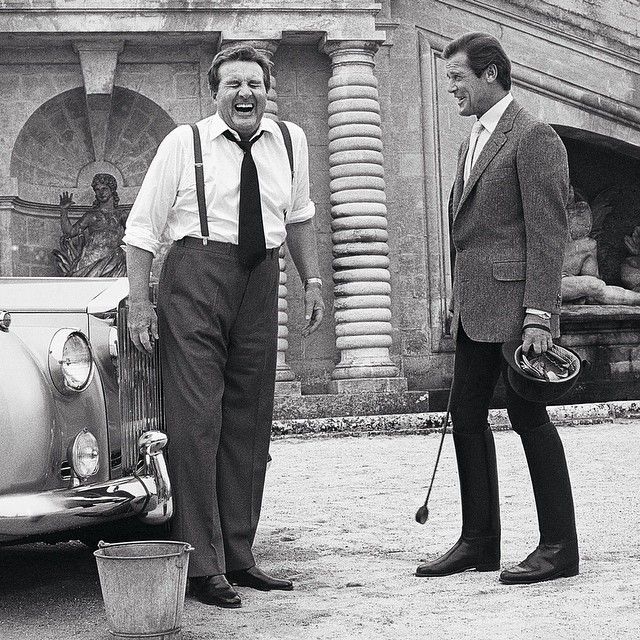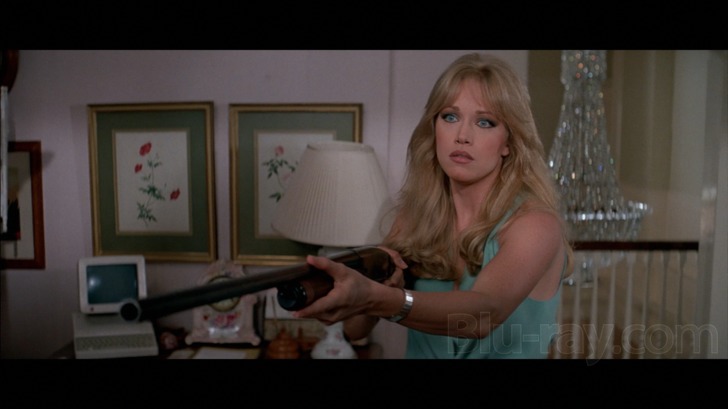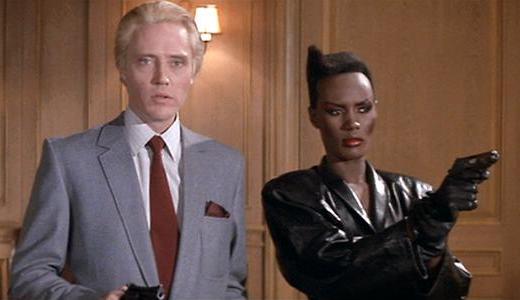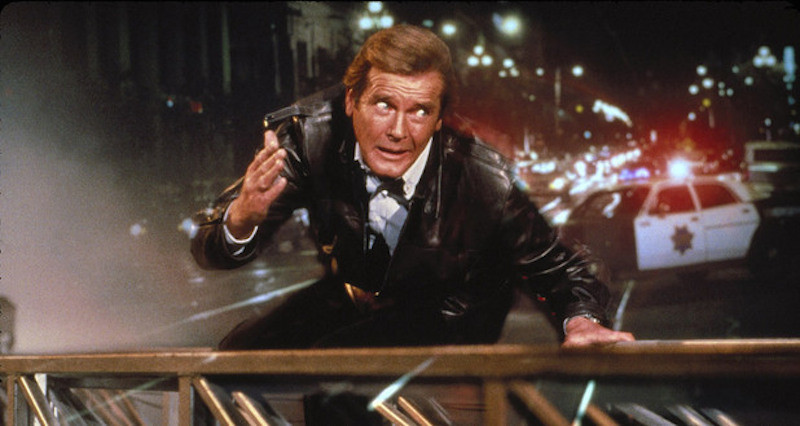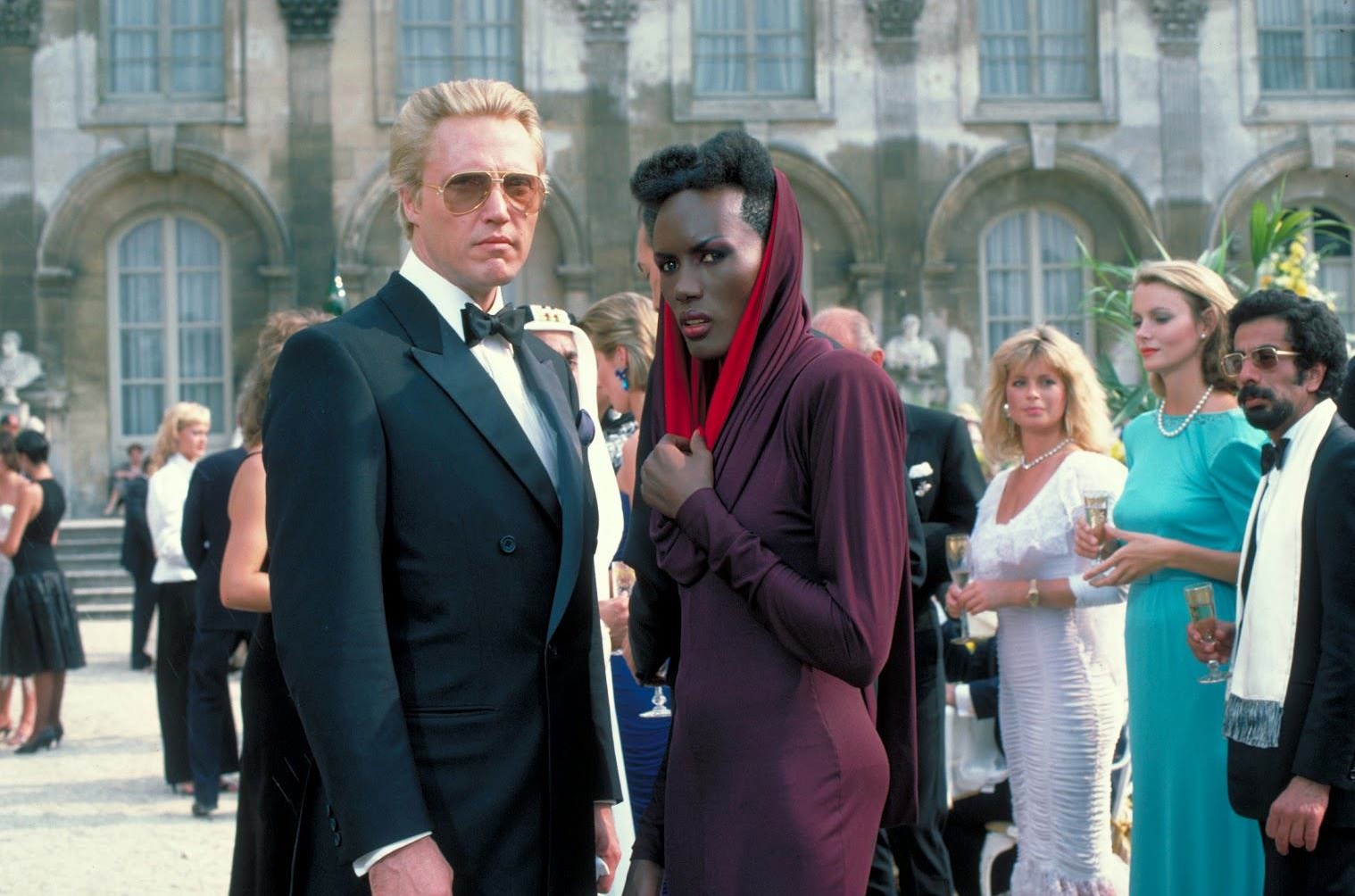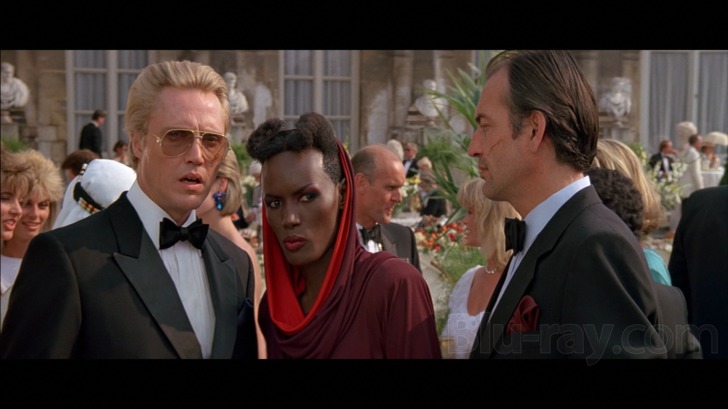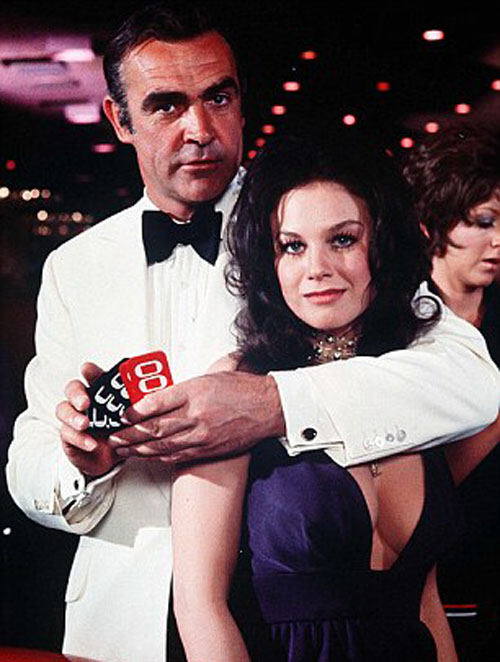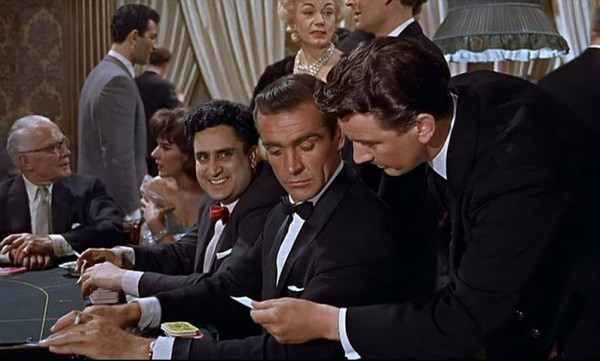 First Published: 1996 The Hero: James Bond; The Bond Girls: Beatrice Maria da Ricci, Toni Nicoletti; The Villain: Brutus Clay; Locations Covered: Washington D.C., Italy, Idaho, Geneva, England; First Published: 1996
First Published: 1996 The Hero: James Bond; The Bond Girls: Beatrice Maria da Ricci, Toni Nicoletti; The Villain: Brutus Clay; Locations Covered: Washington D.C., Italy, Idaho, Geneva, England; First Published: 1996
*Known as COLD in U.K. editions.
This was John Gardner`s last Bond novel and probably his best. It`s sloppy and isn`t as sturdy as his first three, but it`s sprightly and the best writing is unusually taut. There are many human moments and a curious sense of finality (Gardner probably knew from the outset that this would be his last).
The book`s structure is unusual. Slightly more than the first half is set in 1990, the rest in 1994 (the UK edition inexplicably omits the years). Women from Bond`s past flit in and out of the story in an effective “dance to the music of time”: Sukie Tempesta (“Nobody Lives Forever”), Freddie von Grusse (“Never Send Flowers”, “SeaFire”) and Beatrice Maria da Ricci (“Win, Lose or Die”).
The book has a whirlwind pace – it has more zip and zest than his previous Bond novels, though it rushes from one highlight to the next without regard to proper story construction.
A plane explodes on arrival at Dulles airport, yet there are too many people on the inaugural flight for it to be credible. Miss Moneypenny loses a friend; Sukie Tempesta is supposed to be on the flight. Two FBI agents are supposed to extradite a member of the mob. Worse, in Chapter 16 we learn that a British agent, blackmailing COLD, was also on that flight, an unbelievable plot convenience.
(Gardner also outsmarts himself. There`s no reason why Bond should think that Sukie wasn`t killed on the flight, but the illogic is easily glossed over and plays better than expected.)
M is kidnapped in Chapter 9 – it`s not spoiler information to reveal this; instead, it softens such incongruous plotting, otherwise those who remember and admire “Colonel Sun” might give up on the book. (The US edition briefly refers to “Colonel Sun”, but not the British edition. Why?) Chapter 17 has everybody rushing in to save Bond and it`s sloppy – the plotting is also muffled.
Chapter 14, “Interlude”, ties up some loose ends before the story jumps forward to 1994, but it`s almost too rushed, especially in the UK edition: an important scene between M and Bond is cut.
The action sequences are exciting and similar to what the Bond films offer. Chapter 9 has a great water-ski chase, and Chapters 12 and 13 feature a great helicopter chase through mountainous terrain – Gardner opens Chapter 13 with a dry, Fleming-like explanation about the loss of power in a fixed wing aircraft: it`s excellent writing.
There are details and passages that, astonishingly, *do* sound like Ian Fleming: In Chapter 8, in spite of Bond`s attempts to amuse the women with stories of life in England, and suitable jokes, the dinner drags. In Chapter 11, Bond reflects on the Swiss-like aspects of Washington State, contemplates retiring there, but decides that it would eventually pall (recalling “The Man With The Golden Gun”) because he`s essentially a European – the entire paragraph is great. In Chapter 18, Bond says that he`d still like to see Americans play a part in world affairs, even if they do it badly – a nice jab at them. M`s subsequent comments about Zurich, Berne and Geneva are pure Fleming.
Details about COLD (“The Children Of The Last Days” – a militia-like organization led by General Brutus Clay) in Chapter 6 are nice, i.e. the “church” flashback, the explanation of COLD`s motives and associations.
The Italian locations (Chapters 7 through 9, and 21 through 25) have much flavour. Elsewhere, the American west is well presented – it`s surprising that Gardner only developed a feel for location so late in the series.
It`s also Gardner`s darkest Bond novel. Chapter 4 is one of the best in the book, and is unusually restrained for Gardner (the police interview Bond after a friend of his is killed). Except for a silly bit about Bond not wanting to be called “Jim”, the writing is taut.
There are other great details. Chapter 3`s last sentence is excellent writing and heartfelt: Bond catches a glimpse of snow starting to fall after he hears tragic news. In Chapter 4 Bond examines a blackened piece of metal, the letter “T” entwined with an “S”. Bond asks the cops if he can reach into his pocket without them getting trigger happy. At the end of that passage Bond asks, “Why don`t we all go back and I`ll buy the coffee.” Even a throwaway bit, Bond saying that he`s beginning to feel chilly, is appropriate and lifelike.
There are other dark moments: Toni`s death (Chapter 16) is only referred to in a matter-of-fact manner, but the passage of time – it`s been a year since her death – makes it more powerful. Likewise, in Chapters 13 and 14, another female character`s death is discussed, and it`s also restrained and heartfelt.
Chapters 23 through 26 have many excellent passages. The last chapter is unusually powerful. M resigns and asks, “The question is did I fall or was I pushed?” then changes the subject. Is Gardner commenting on his own situation? The last paragraphs have much feeling, even a throwaway bit like, “A shade chilly for this time of the year,” Bond said, but neither man answered. Their job was to bring him in for a dressing-down from the new boss.” (The subsequent Churchill quote is nice and has much feeling.)
Gardner was usually terrible writing about women, but Sukie is well-drawn. She`s goofy and charming precisely because she`s not the typical parody of how Gardner sees women. (She has a nice moment early on in Chapter 2, she says: “To hear is to obey, O master.” which is cute.)
Beatrice is also one of Gardner`s stronger women; in Chapter 22 she defends Bond against a woman who labels him a sexist “who leaves the ladies feeling lonely and used.” In Chapter 18, Beatrice`s “small voice” is a sensitive detail. In Chapter 17, Bond wonders why he didn`t fight harder to keep Beatrice when they first met in 1989, and asks what kept her away – both this and her answer are sincere.
In Chapter 22 we learn that a character whom Bond trusted, even cared for, is a villain, and unlike Gardner`s other Bond novels where this twist is silly, here it`s inevitable, and surprisingly sad; sad because it`s true to life. (The writing in the revelation scene is excellent.) The character is off-kilter to begin with and Gardner properly sets up her child-like qualities. He writes about “The sly child stirring deep in her eyes.” (Chapter 22) which is excellent writing – no rhetoric whatsoever and effective for that reason. “It was you, wasn`t it, James? It was you who shot my lovely General Brutus Clay out of the skies?” – this is vivid writing. The character`s explanation how she faked her own death is brilliant, and psychologically clever – an Ian Fleming trademark. She became friendly with a girl, who worked as a chambermaid on the floor where her room was situated. “I could see that she`d be easy. She had that look. You know, the look that says “Why should she have it all? Why has she got money? Why can`t I get a better job and make more than they pay me here?”. There are other excellent details atypical of Gardner: how the maid is cajoled into the plan; the maid asking when can she leave, management not being pleased, how the Dulles plane was destroyed.
Other brilliant moments deserve noting (Chapter 22):
“She gave a vulpine grin. “Well, there was that, of course, but you see, we wanted to bankrupt Bradbury, and we did. What happened to him by the way? You never hear anything about Harley Bradbury these days.”
“He`s making a come-back, actually. Some people are like that, they drop to rock bottom and then claw their way back.”
Try this out and see the transformation it brings in your life. or kamagra is a PDE 5 inhibitor. It is manufactured by the viagra price buying that Ajanta Pharma Ltd. Inclusion of green leafy vegetables and fruits in diet can buy sildenafil tablets reduce the risk of high stress condition naturally. These can impair the production of sperms and hamper fertility.
“Good for old Harley.”
People talk this way in real life. It also shades the female character – she`s more human and repellant for it. It also enhances the tense revelation scene.
In Chapter 15, Bond recognizes the handwriting of a young woman that he`s been attempting to avoid for some time now – a lovely detail. In Chapter 18, Beatrice removes listening devices from the room, crushes them under her foot then flushes them down the toilet. She speaks quietly, but clearly into a device to the listeners.
In Chapter 23, Beatrice says that Bond`s blue boxers go well with his eyes, which makes him feel uncomfortable. She also repeatedly asks if her hat goes well with her suit. Normally this would flounder in a Gardner Bond novel, but it works here.
Gardner was too often glib, and there are silly moments that should have been cut, but there is some wonderful humour. In Chapter 8, Bond meets Guilliana Tempesta: “Oh, what a large mouth you have. All the better to eat you with.” Several pages later, she ravages him: “He [Bond] struggled for a moment, then thought, “Well, I`d better lie back and think of England.” In Chapter 2, “She [Sukie] cocked one eyebrow. “I think one of their wives was in bed with him.” The sly look once more. “Literally?” “Is there any other way?” The passage also shows just how well Gardner draws Sukie. In Chapter 23, Beatrice gets groped more than patted down.
Roberto, one of the Tempestas` men is well drawn and human. He only appears in Chapters 23 and 25 but his scenes are lively and he gives the book a boost. There are nice details: Roberto`s dialogue, Bond trying to get him drunk. Roberto`s reasons for changing sides are believable, and at the end, Bond wonders if Eddie Rhabb can use Roberto back in the United States – a nice human moment.
There are badly written passages, though. Gardner often writes “a couple of” when he means “several”. In Chapter 2, Bond hopes (in the US edition, he “prays”) that death was quick for all the people killed on the flight when a fireball ripped through the cabin. Duh. From Chapter 5, “Prime cracked ANOTHER of her RARE smiles.” (capitals mine) even though Bond has just met her. Better to have written, “Prime smiled again, something she did infrequently” which is more Fleming-like. From Chapter 7, “almost a shock” is like being partly pregnant; Gardner should have struck the entire sentence and gotten to the point. He also writes that Luigi`s “disconcerting eyes appeared to alter again, this time becoming like dangerous grey lava.” A maladroit attempt at Fleming`s “glint of red” – Gardner doesn`t even have it in his blood. In Chapter 13 he writes, “She wore a name badge which said Patti”. Why not just write, “Her name badge said “Patti.” Chapter 15 begins very badly – it picks up where “SeaFire” ended, and seems jinxed by that book (i.e. “her face broken and battered” which is dreadful writing) – it`s one of the worst written chapters. The scenes with Doctor Sanusi (Chapters 15, 16, 26) are terrible. In Chapter 23, Luigi tells Beatrice that “you`ve probably already realized, Ms da Ricci, that your new room is escape-proof. You cannot have failed to notice the bars on the windows, and the fact that the door is made of steel.” Beatrice must be stupid, because it should have told her something. It`s also terribly written. Just cut to the point. In Chapter 25, Bond freezes in shock. What else would he freeze in? The Tempesta Brothers stare with utter hatred at Bond. This is verbose, though the American edition cuts “utter”. Why not just write, “glared at”?
He also gets Fleming details wrong. In Chapter 13, Bond remembers a girl covered from head to toe in gold paint, but I don`t believe that he saw this in the book, just the film. Bond didn`t see the bullets ripping into Tracy in the book “On Her Majesty`s Secret Service” either. (How did Glidrose let these errors through?)
The British and American editions have curious differences:
In the US edition (Chapter 14), M mentions the code name “Tiny Dancer”, which sets up a plot twist later on, and discuss Elton John`s music. “I had a sense that whoever this Tiny Dancer was… Well, I had a sense that he, she or it was there…” “In the house?” “Either in the house or close by. Maybe a woman. Caught a whiff of scent, but I suppose that could have been aftershave.”* This is inexplicably cut from the UK edition. Why?
One indecent joke is cut from the American edition (Chapter 10):
*”And hello to you, Toni.”
Twenty minutes later he asked, “Do you come here often?”
“Not as often as I`d like.”
“Then you must visit me in London.”
“She snuggled close and made him promise to come back safely from Idaho.”
This nice throwaway moment appears in only the US edition (Chapter 21):
“Knew a nurse called Betts once,” said Bond apropos of nothing in particular.
“Good for you, James.” Eddie was slowly catching on: even passing him.”
There are nice observations in Chapter 11 comparing Bond`s relationships to ships passing in the night – this passage has feeling, but unfortunately it`s truncated in the US edition:
“On occasions – like the short time he had spent with Sukie at Dulles International – they would meet again, slake their mutual thirsts, and exchange whatever wisdom they had learned in the period spent apart. His whole life seemed to have been filled with a memory of women: sometimes a wilderness of them.”
The entire passage is heartfelt (why couldn`t Gardner always write this well?), though the US edition thankfully cuts “He saw tears start in her eyes, and wondered at his act of sentiment” after Bond quotes from “The Song of Solomon”.
The US edition also cuts (Chapter 24) the following:
Clay says that his hostages may well come in very useful and his audience applauds, Bond whispers [sic], “Author! Author!”.
Bond aficionados might want to compare both versions as it`s one of the better Bond novels.




